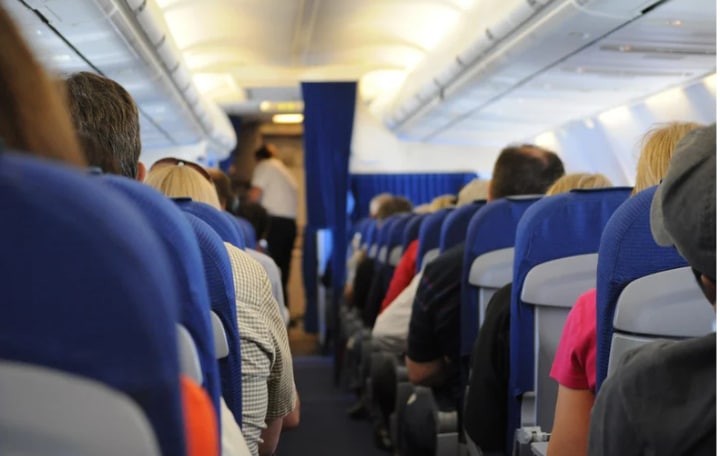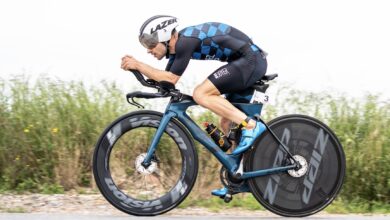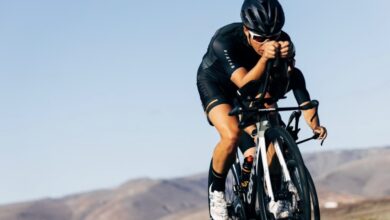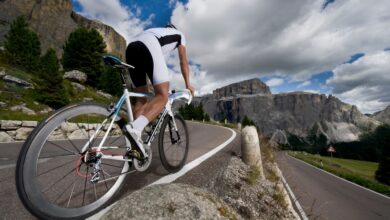How to minimize the negative effects of long trips in athletes?

Our friends Crown Sport Nutrition They give us some good advice to avoid the negative effects that can affect the performance of an athlete on long journeys, such as Jet Lag.
Although this article is designed for trips between competitions, it can be perfectly applied during the vacation season, since these are times when you "disconnect" and travel for several hours.
Conclusion various factors are involved in travel and that can affect athletes.
The most important are the Stress, number of hours sitting, diet disturbance usual, thermal changes, moderate hypoxia during flights, etc.
These factors not only bring psychological stress to the athlete, but also have a consequence on sports performance.
One of the most important and striking is the so-called "Jet Lag". It is simply an alteration of the circadian rhythms due to the change in the time zone.
There are several studies that have confirmed that travel has adverse effects on sports performance.
An example is a study where the performance of several athletes was evaluated in a sprint test.
They were carried out after simulate, in a hypoxia chamber, the effects of a plane trip, 24-hour international flights or 5-hour domestic flights were used as an example.
The results showed a further deterioration in performance after the 24-hour flight, which was accompanied by a greater feeling of fatigue and a greater change in the quantity and quality of sleep¹.
Another study showed how travel can affect health, since there was a higher incidence of diseases in the days following a trip more than 5 hours apart.
To do this, they compared a group of rugby players with the weeks that they did not travel².
How to avoid the negative effects of travel?
As previously mentioned, the long-term travel could have negative effects in the performance of athletes.
There are many tricks that are used in travel, but what science says is that there are few that can be used.
In a review published in the prestigious British Journal of Sports Medicine, an attempt was made to assess the effectiveness of different strategies.
Both the taking of drugs (melatonin, sedatives, stimulants) and the use of exercise, sleep, nutrition or light were analyzed in order to avoid these negative effects.
After analyzing 22 studies, the authors of this review concluded that these strategies are of low quality and with a high risk of bias³.
Due to this lack of scientific evidence, another group of experts made up of doctors, scientists, nutritionists and physical therapists published another article where they propose Strategies to follow when traveling.
long vs short trips
The first thing they do is differentiate between trips that have or do not have jet lag (short trips <3 hours, and long trips > 3 hours).
It was found that on longer trips circadian rhythms are disturbed, producing an asynchrony between the "peripheral" clocks (guided by factors such as light and noise) and the central clocks of the organism
This can cause various symptoms such as fatigue, gastrointestinal problems, drowsiness or difficulty falling asleep at night.
The authors estimate that it takes half a day for each time zone to recover this synchrony if traveling west and one day traveling east.
For this reason, they recommend adjust several days before the trip, sleep and wake signals.
Travel East or West
For example, if you travel east, you will have to go to bed earlier and expose yourself to sunlight earlier and earlier to adapt these circadian rhythms.
It is also recommended to avoid sunlight and artificial light (including mobile phones) and gradually reduce food intake in the last part of the day.
If you travel west, the ideal is to gradually delay the time to go to sleep.
It has been shown that progressively adapt these circadian rhythms both before and after the trip improved both the number of hours of sleep on the trip and in the days after, as well as the effects of Jet Lag.
Melatonin
Supplement with melatonin the days before and after the trip can also help to avoid jet lag.
During the trip it is also important to have a correct level of hydration y avoid eating in abundance (high in calories) and drinks like alcohol or coffee.
Depending on the direction of our trip (East/West) the goal may be to be awake throughout the trip, so in this case it is recommended to drink caffeine and avoid prolonged periods of inactivity, moving around the plane from time to time or do mobility exercises.
Recommendations table
Table 1. Summary of some recommendations to avoid the negative effects of flights in athletes. Adapted from Janse Van Rensburg et al.4
| BEFORE THE FLIGHT |
| Gradually adapt your sleep schedule to the destination time (eg if traveling west, go to bed later, and if traveling east, go to bed earlier). |
| Adapt light exposure to destination time (if traveling west, maximize night light, and if traveling east, maximize morning sunlight). |
| DURING FLIGHT |
| Try to sleep as much as possible, especially in the "night" hours at the destination. |
| Avoid exposure to light and use of electronic devices during sleep hours. |
| Control food and drinks, avoiding copious meals and carbonated, caffeinated or alcoholic beverages. |
| Stay hydrated and move frequently (every two hours maximum) during non-sleep hours. |
| AFTER THE FLIGHT |
| Continue progressively adapting the schedule of sleep and exposure to light to the destination time. |
| Exercise during daylight hours. |
| Evaluate pharmacological strategies that help sleep and adjust circadian rhythms to the new schedule, or otherwise caffeine if you want to be active. |
Conclusions
As has been seen, trips, especially if they are of long duration, can have negative consequences for athletes.
The main objective must always be to promote rest and hydration, trying to avoid copious meals and drinks that make sleep difficult, such as those that contain caffeine or alcohol.
In addition, in the case of trips in which several time zones are crossed, it is advisable to adapt circadian rhythms progressively even from several days before the flight, which can be achieved by modifying the exposure to stimuli such as sunlight and artificial light according to the schedule. in the destiny.
References
Fowler P, Duffield R, Vaile J. Effects of simulated domestic and international air travel on sleep, performance, and recovery for team sports. Scand J Med Sci Sport. 2015;25(3):441-451. doi:10.1111/sms.12227 Schwellnus MP, Derman WE, Jordaan E, et al. Elite athletes traveling to international destinations >5 time zone differences from their home country have a 2-3-fold increased risk of illness. Br J Sports Med. 2012;46(11):816-821. doi:10.1136/bjsports-2012-091395 Janse Van Rensburg DCC, Jansen Van Rensburg A, Fowler P, et al. How to manage travel fatigue and jet lag in athletes? A systematic review of interventions. Br J Sports Med. 2020;54(16):960-968. doi:10.1136/bjsports-2019-101635 Janse van Rensburg DC, Jansen van Rensburg A, Fowler PM, et al. Managing Travel Fatigue and Jet Lag in Athletes: A Review and Consensus Statement. Sport Med. 2021;51(10):2029-2050. doi:10.1007/s40279-021-01502-0 Fowler P, Duffield R, Morrow I, Roach G, Vaile J. Effects of sleep hygiene and artificial bright light interventions on recovery from simulated international air travel. Eur J Appl Physiol. 2015;115(3):541-553. Fowler P, Knez W, Thornton H, et al. Sleep Hygiene and Light Exposure Can Improve Performance Following Long-Haul Air Travel. Int J Sport Physiol Perform. 2020;16(4):517-526. Chan V, Wang L, Allman-farinelli M. Efficacy of Functional Foods, Beverages, and Supplements Claiming to Alleviate Air Travel Symptoms: Systematic Review and Meta-Analysis. Nutrients. 2021;13(3):961.
There are no previous results.




























